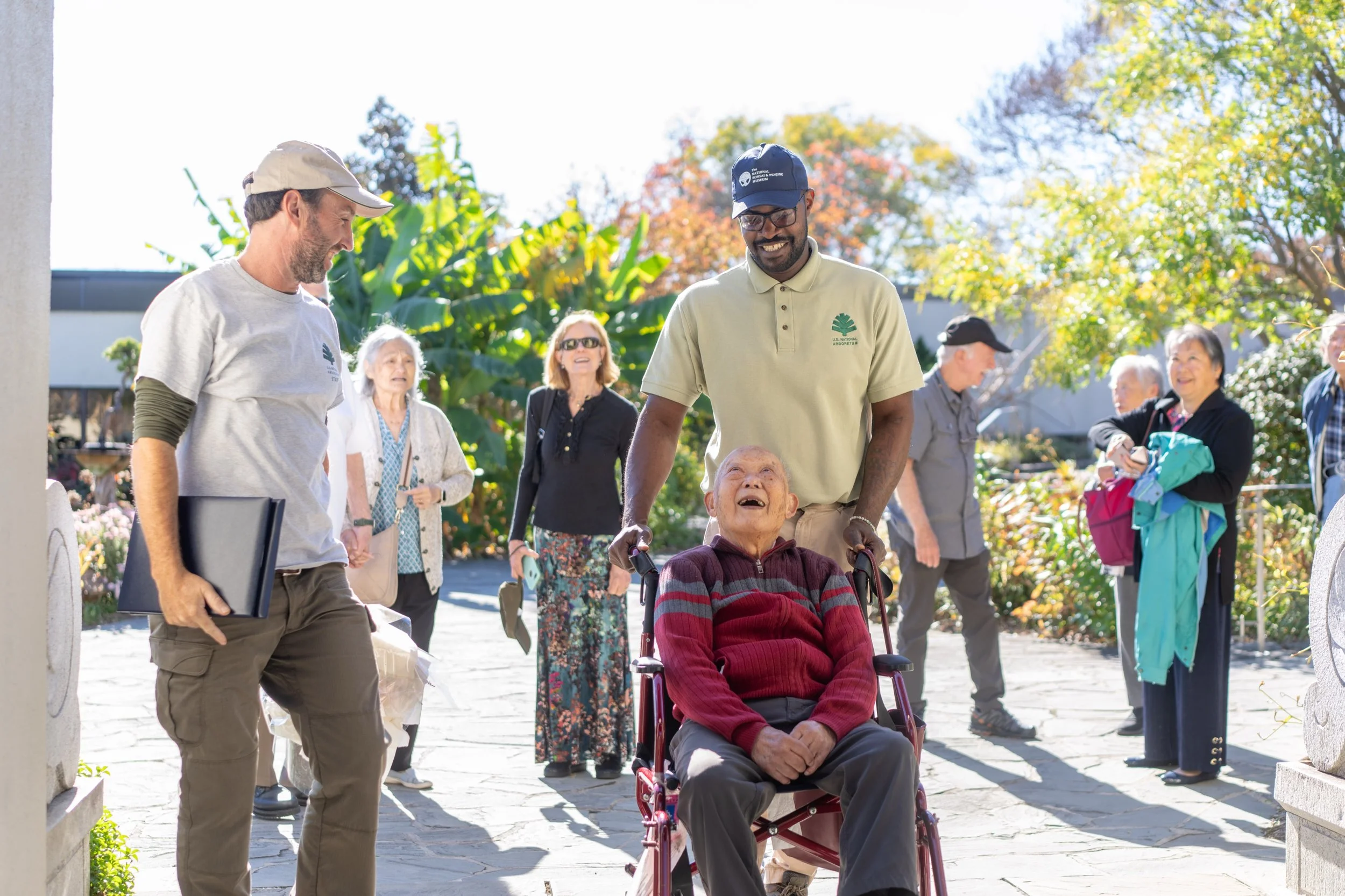Origami instructor, Jeff Raab
A young participant holds her origami crane
As one of the programs and classes offered at the National Bonsai & Penjing Museum, origami professional Jeff Raab led the Museum’s first-ever origami class in January. People of all ages and folding skill levels attended to learn different bases and models.
Raab started small, with a few simple folds and models, eventually moving to the quintessential paper crane, in hopes that attendants would then use their crane-creation skills to contribute to the National Symphony Orchestra’s effort to bring 1,000 paper cranes to the Children’s Peace Monument in the Peace Memorial Park in Hiroshima, Japan as part of their Asia 2020 tour.
Kennedy Center leader Andrew Brown wrote a note of thanks for everyone who participated in the project:
I am proud to report that the National Symphony Orchestra received more than 3,000 paper cranes sent from around the country. It was a remarkable response to our project in preparation for our visit to Hiroshima, Japan.
As I am sure you may have realized, the NSO tour to Japan was canceled due to COVID-19. After 15 months of preparation, we were very disappointed, but our offices were full of the most beautiful and colorful origami cranes. We continued to organize and string the cranes together even after the cancellation of the tour.
On Friday, March 6th, NSO musicians performed a concert at the Japan Information and Culture Center in Washington, D.C. On that occasion, we were able to present 2,000 origami cranes to Minister Takehiro Shimada from the Embassy of Japan, along with a special poster made by members of the D.C. Youth Orchestra Program.
All of the origami cranes presented will be carefully packaged and mailed to the City of Hiroshima along with a record of everyone who participated and shared comments as part of this project.
Click here to see photos of the journey of the NSO Paper Crane Project. It has been a pleasure to work on this project with you, and we thank you for your contributions towards this project in recognition of the 75th Anniversary of the end of World War II.
Sincerely,
Andrew Brown
Participants learned how to fold different figures
While we are currently closed to mitigate the spread of COVID-19, we are looking forward to continue hosting our variety of workshops – from origami to forest bathing to tai chi – as soon as authorities permit reopening. We can’t wait to see you again!


































